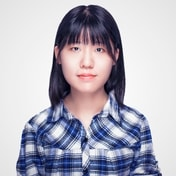Patterned-Liquid-Crystal for Novel Displays
A special issue of Crystals (ISSN 2073-4352). This special issue belongs to the section "Liquid Crystals".
Deadline for manuscript submissions: closed (1 November 2021) | Viewed by 35894
Special Issue Editors
Interests: liquid crystals; AR/VR/MR displays
Special Issues, Collections and Topics in MDPI journals
Interests: optics; display; VR; AR; liquid crystal; OLED
Interests: optics; VR; AR; liquid crystal
Special Issues, Collections and Topics in MDPI journals
Interests: liquid crystals; photonics; metasurface; electrooptics
Special Issue Information
Dear Colleagues,
Optical elements based on patterned liquid crystals (LCs) are functional planar structures with a patterned orientation of an anisotropic axis, including Pancharatnam–Berry phase optical elements (PBOEs), which are basically half-wave plates with varying optical axis patterns, and Bragg–Berry phase optical elements (BBOEs), which are mainly composed of cholesteric liquid crystals (CLCs) under Bragg conditions. Unlike conventional refractive optics that utilize the optical path difference to produce phase patterns, patterned-LC-based optical elements generate the desired phase profile by spatially varying the LC directors. Because of their high degree of optical tunability, strong polarization selectivity, nearly 100% diffraction efficiency, and simple fabrication process, these patterned-LC-based optical elements have found widespread applications in novel optical devices and emerging display systems. Furthermore, several scientifically interesting and practically useful electro-optical effects, such as focusing, beam splitting and steering, waveguide coupling, and wavelength filtering, have been realized with these patterned-LC-based optical elements.
With the development of advanced liquid crystal materials and polarization holography methods, various kinds of patterned LC optical elements with high-grade quality have been demonstrated. Because of their characteristic polarization dependency and high diffraction efficiency, patterned-LC-based optical elements have been successfully integrated into optical systems to satisfy the increasing needs of next-generation display systems, such as near-eye displays for augmented/virtual/mixed reality and head-up displays for automobile and aviation.
This Special Issue of Crystals serves to provide a platform for researchers to report results and findings in LC-based optical elements and systems, including numerical modeling methods, LC materials, fabrication procedures, patterning, optical properties, and their applications in emerging display systems.
Potential topics include but are not limited to:
- Novel structures of the patterned LC optical elements;
- Materials and optical characteristics for LC optical elements;
- Effect of processing and patterning on LCs;
- Simulation and analysis of the patterned LC structure;
- AR/VR/MR display systems based on patterned LC optical elements;
- Devices based on the patterned LC optical elements.
Dr. Kun Yin
Dr. Guanjun Tan
Dr. Shuxin Liu
Dr. Artur Geivandov
Dr. Gaurav P. Shrivastav
Guest Editors
Manuscript Submission Information
Manuscripts should be submitted online at www.mdpi.com by registering and logging in to this website. Once you are registered, click here to go to the submission form. Manuscripts can be submitted until the deadline. All submissions that pass pre-check are peer-reviewed. Accepted papers will be published continuously in the journal (as soon as accepted) and will be listed together on the special issue website. Research articles, review articles as well as short communications are invited. For planned papers, a title and short abstract (about 100 words) can be sent to the Editorial Office for announcement on this website.
Submitted manuscripts should not have been published previously, nor be under consideration for publication elsewhere (except conference proceedings papers). All manuscripts are thoroughly refereed through a single-blind peer-review process. A guide for authors and other relevant information for submission of manuscripts is available on the Instructions for Authors page. Crystals is an international peer-reviewed open access monthly journal published by MDPI.
Please visit the Instructions for Authors page before submitting a manuscript. The Article Processing Charge (APC) for publication in this open access journal is 2600 CHF (Swiss Francs). Submitted papers should be well formatted and use good English. Authors may use MDPI's English editing service prior to publication or during author revisions.
Keywords
- Liquid crystals
- Photoalignment
- Polarization optical elements
- Near-eye displays
- Head-up displays









